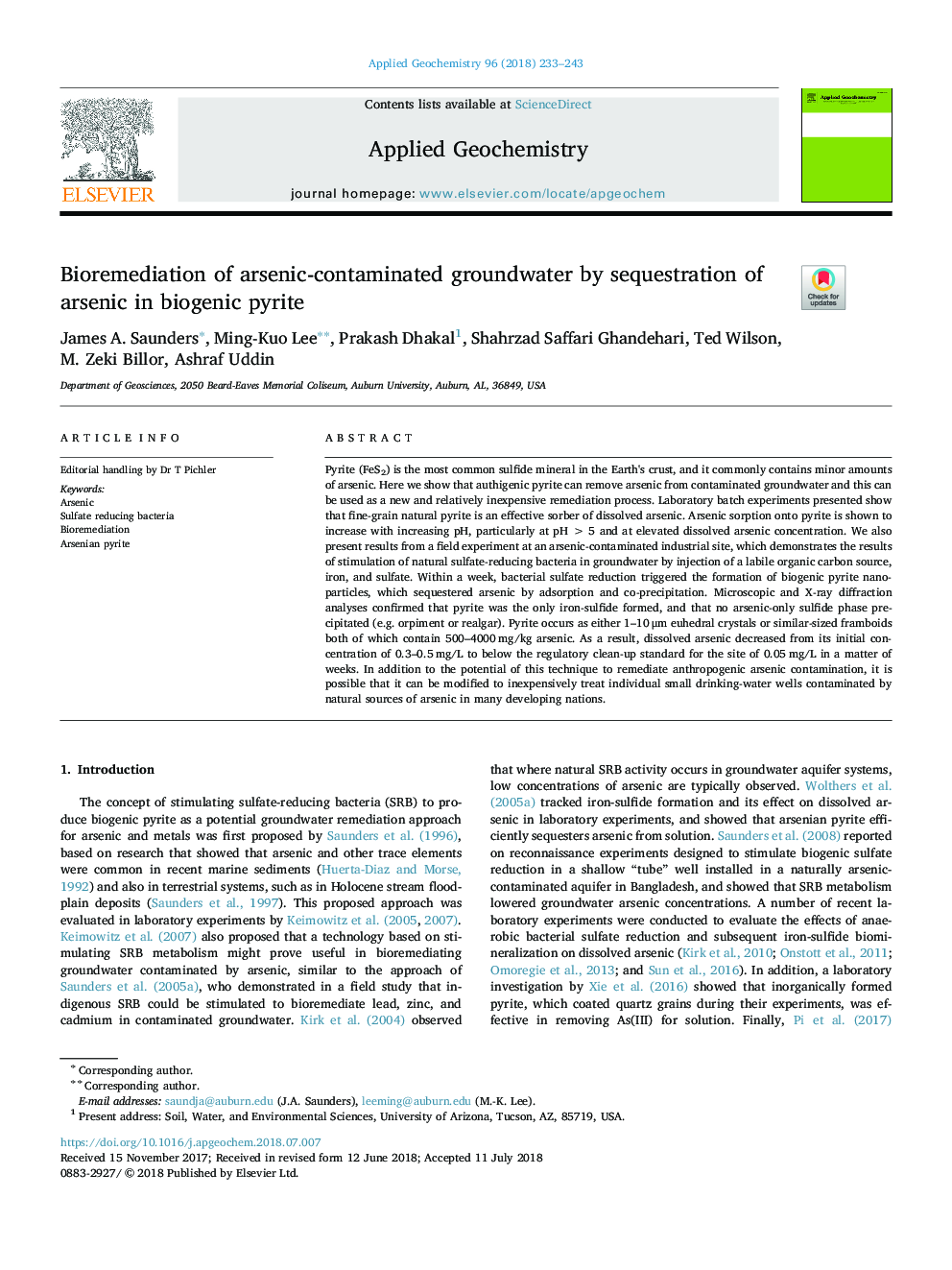| Article ID | Journal | Published Year | Pages | File Type |
|---|---|---|---|---|
| 8863044 | Applied Geochemistry | 2018 | 11 Pages |
Abstract
Pyrite (FeS2) is the most common sulfide mineral in the Earth's crust, and it commonly contains minor amounts of arsenic. Here we show that authigenic pyrite can remove arsenic from contaminated groundwater and this can be used as a new and relatively inexpensive remediation process. Laboratory batch experiments presented show that fine-grain natural pyrite is an effective sorber of dissolved arsenic. Arsenic sorption onto pyrite is shown to increase with increasing pH, particularly at pHâ¯>â¯5 and at elevated dissolved arsenic concentration. We also present results from a field experiment at an arsenic-contaminated industrial site, which demonstrates the results of stimulation of natural sulfate-reducing bacteria in groundwater by injection of a labile organic carbon source, iron, and sulfate. Within a week, bacterial sulfate reduction triggered the formation of biogenic pyrite nanoparticles, which sequestered arsenic by adsorption and co-precipitation. Microscopic and X-ray diffraction analyses confirmed that pyrite was the only iron-sulfide formed, and that no arsenic-only sulfide phase precipitated (e.g. orpiment or realgar). Pyrite occurs as either 1-10â¯Î¼m euhedral crystals or similar-sized framboids both of which contain 500-4000â¯mg/kg arsenic. As a result, dissolved arsenic decreased from its initial concentration of 0.3-0.5â¯mg/L to below the regulatory clean-up standard for the site of 0.05â¯mg/L in a matter of weeks. In addition to the potential of this technique to remediate anthropogenic arsenic contamination, it is possible that it can be modified to inexpensively treat individual small drinking-water wells contaminated by natural sources of arsenic in many developing nations.
Related Topics
Physical Sciences and Engineering
Earth and Planetary Sciences
Geochemistry and Petrology
Authors
James A. Saunders, Ming-Kuo Lee, Prakash Dhakal, Shahrzad Saffari Ghandehari, Ted Wilson, M. Zeki Billor, Ashraf Uddin,
